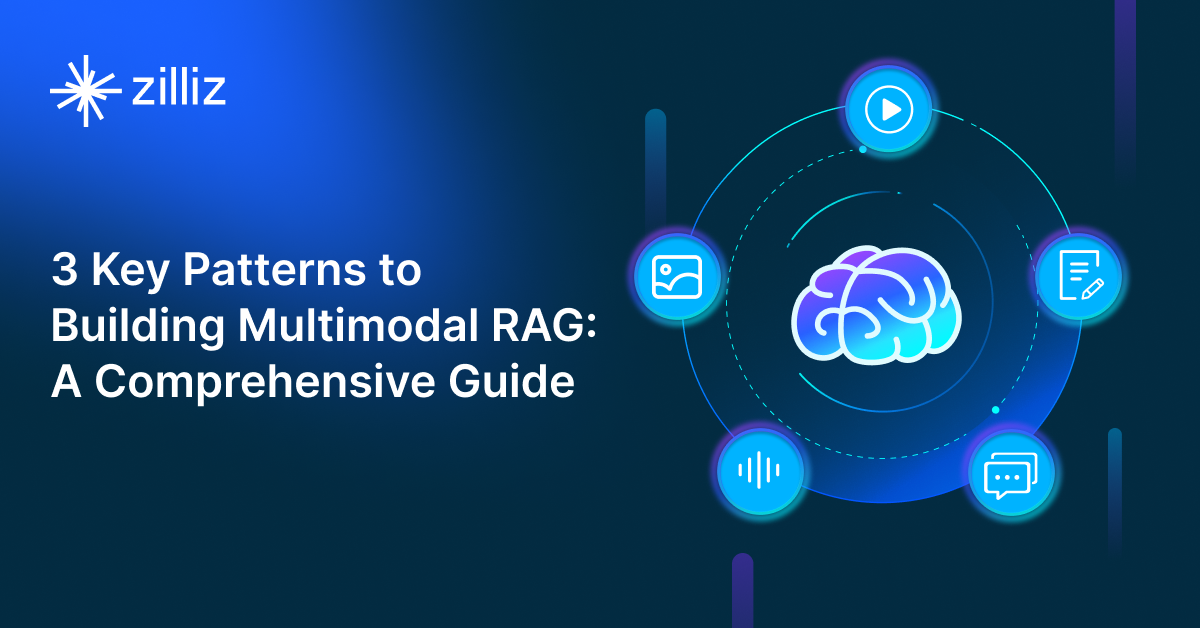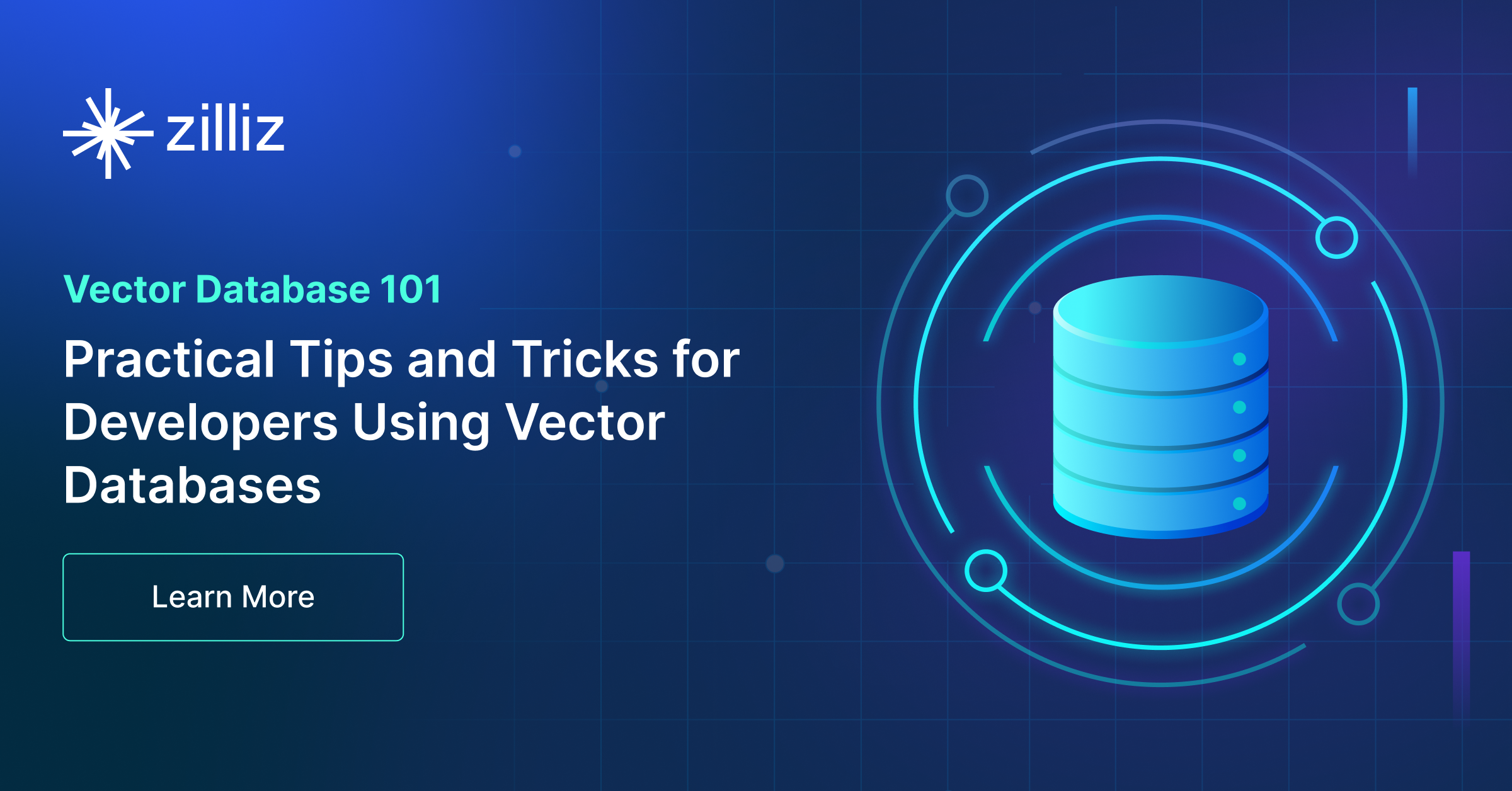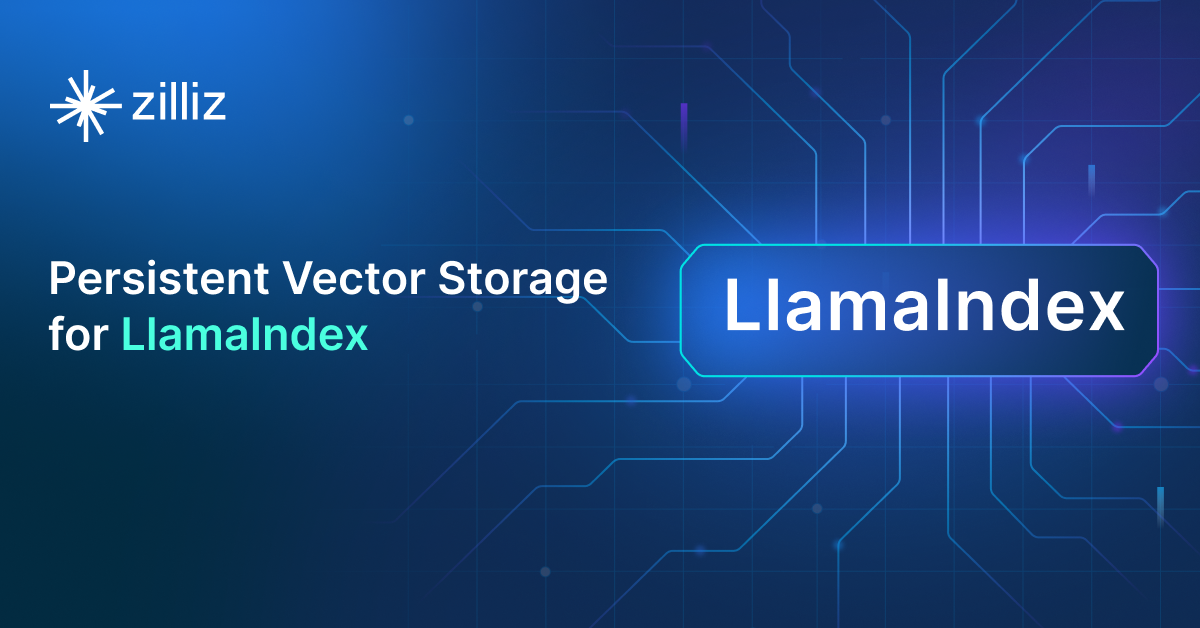Build RAG Chatbot with Haystack, OpenSearch, Mistral Ministral 8B, and Cohere embed-english-light-v3.0
Introduction to RAG
Retrieval-Augmented Generation (RAG) is a game-changer for GenAI applications, especially in conversational AI. It combines the power of pre-trained large language models (LLMs) like OpenAI’s GPT with external knowledge sources stored in vector databases such as Milvus and Zilliz Cloud, allowing for more accurate, contextually relevant, and up-to-date response generation. A RAG pipeline usually consists of four basic components: a vector database, an embedding model, an LLM, and a framework.
Key Components We'll Use for This RAG Chatbot
This tutorial shows you how to build a simple RAG chatbot in Python using the following components:
- Haystack: An open-source Python framework designed for building production-ready NLP applications, particularly question answering and semantic search systems. Haystack excels at retrieving information from large document collections through its modular architecture that combines retrieval and reader components. Ideal for developers creating search applications, chatbots, and knowledge management systems that require efficient document processing and accurate information extraction from unstructured text.
- OpenSearch: An open-source search and analytics suite derived from Elasticsearch. It offers robust full-text search and real-time analytics, with vector search available as an add-on for similarity-based queries, extending its capabilities to handle high-dimensional data. Since it is just a vector search add-on rather than a purpose-built vector database, it lacks scalability and availability and many other advanced features required by enterprise-level applications. Therefore, if you prefer a much more scalable solution or hate to manage your own infrastructure, we recommend using Zilliz Cloud, which is a fully managed vector database service built on the open-source Milvus and offers a free tier supporting up to 1 million vectors.)
- Mistral Ministral 8B: A compact, high-efficiency language model optimized for scalable natural language processing. It excels in rapid text generation, multilingual tasks, and context-aware reasoning while maintaining low computational demands. Ideal for real-time chatbots, content summarization, and edge-device deployment where speed and resource efficiency are critical.
- Cohere embed-english-light-v3.0: A lightweight, efficient embedding model designed to convert English text into high-dimensional vector representations. Excelling in speed and scalability, it balances accuracy with low computational demands, making it ideal for semantic search, text clustering, and retrieval-augmented applications in resource-constrained environments.
By the end of this tutorial, you’ll have a functional chatbot capable of answering questions based on a custom knowledge base.
Note: Since we may use proprietary models in our tutorials, make sure you have the required API key beforehand.
Step 1: Install and Set Up Haystack
import os
import requests
from haystack import Pipeline
from haystack.components.converters import MarkdownToDocument
from haystack.components.preprocessors import DocumentSplitter
from haystack.components.writers import DocumentWriter
Step 2: Install and Set Up Mistral Ministral 8B
To use Mistral models, you need first to get a Mistral API key. You can write this key in:
- The
api_keyinit parameter using Secret API - The
MISTRAL_API_KEYenvironment variable (recommended)
Now, after you get the API key, let's install the Install the mistral-haystack package.
pip install mistral-haystack
from haystack_integrations.components.generators.mistral import MistralChatGenerator
from haystack.components.generators.utils import print_streaming_chunk
from haystack.dataclasses import ChatMessage
from haystack.utils import Secret
generator = MistralChatGenerator(api_key=Secret.from_env_var("MISTRAL_API_KEY"), streaming_callback=print_streaming_chunk, model='ministral-8b-latest')
Step 3: Install and Set Up Cohere embed-english-light-v3.0
To start using this integration with Haystack, install it with:
pip install cohere-haystack
from haystack import Document
from haystack_integrations.components.embedders.cohere.document_embedder import CohereDocumentEmbedder
from haystack_integrations.components.embedders.cohere.text_embedder import CohereTextEmbedder
text_embedder = CohereTextEmbedder(model="embed-english-light-v3.0")
document_embedder = CohereDocumentEmbedder(model="embed-english-light-v3.0")
Step 4: Install and Set Up OpenSearch
If you have Docker set up, we recommend pulling the Docker image and running it.
docker pull opensearchproject/opensearch:2.11.0
docker run -p 9200:9200 -p 9600:9600 -e "discovery.type=single-node" -e "ES_JAVA_OPTS=-Xms1024m -Xmx1024m" opensearchproject/opensearch:2.11.0
Once you have a running OpenSearch instance, install the opensearch-haystack integration:
pip install opensearch-haystack
from haystack_integrations.components.retrievers.opensearch import OpenSearchEmbeddingRetriever
from haystack_integrations.document_stores.opensearch import OpenSearchDocumentStore
document_store = OpenSearchDocumentStore(hosts="http://localhost:9200", use_ssl=True,
verify_certs=False, http_auth=("admin", "admin"))
retriever = OpenSearchEmbeddingRetriever(document_store=document_store)
Step 5: Build a RAG Chatbot
Now that you’ve set up all components, let’s start to build a simple chatbot. We’ll use the Milvus introduction doc as a private knowledge base. You can replace it your own dataset to customize your RAG chatbot.
url = 'https://raw.githubusercontent.com/milvus-io/milvus-docs/refs/heads/v2.5.x/site/en/about/overview.md'
example_file = 'example_file.md'
response = requests.get(url)
with open(example_file, 'wb') as f:
f.write(response.content)
file_paths = [example_file] # You can replace it with your own file paths.
indexing_pipeline = Pipeline()
indexing_pipeline.add_component("converter", MarkdownToDocument())
indexing_pipeline.add_component("splitter", DocumentSplitter(split_by="sentence", split_length=2))
indexing_pipeline.add_component("embedder", document_embedder)
indexing_pipeline.add_component("writer", DocumentWriter(document_store))
indexing_pipeline.connect("converter", "splitter")
indexing_pipeline.connect("splitter", "embedder")
indexing_pipeline.connect("embedder", "writer")
indexing_pipeline.run({"converter": {"sources": file_paths}})
# print("Number of documents:", document_store.count_documents())
question = "What is Milvus?" # You can replace it with your own question.
retrieval_pipeline = Pipeline()
retrieval_pipeline.add_component("embedder", text_embedder)
retrieval_pipeline.add_component("retriever", retriever)
retrieval_pipeline.connect("embedder", "retriever")
retrieval_results = retrieval_pipeline.run({"embedder": {"text": question}})
# for doc in retrieval_results["retriever"]["documents"]:
# print(doc.content)
# print("-" * 10)
from haystack.utils import Secret
from haystack.components.builders import PromptBuilder
retriever = OpenSearchEmbeddingRetriever(document_store=document_store)
text_embedder = CohereTextEmbedder(model="embed-english-light-v3.0")
prompt_template = """Answer the following query based on the provided context. If the context does
not include an answer, reply with 'I don't know'.\n
Query: {{query}}
Documents:
{% for doc in documents %}
{{ doc.content }}
{% endfor %}
Answer:
"""
rag_pipeline = Pipeline()
rag_pipeline.add_component("text_embedder", text_embedder)
rag_pipeline.add_component("retriever", retriever)
rag_pipeline.add_component("prompt_builder", PromptBuilder(template=prompt_template))
rag_pipeline.add_component("generator", generator)
rag_pipeline.connect("text_embedder.embedding", "retriever.query_embedding")
rag_pipeline.connect("retriever.documents", "prompt_builder.documents")
rag_pipeline.connect("prompt_builder", "generator")
results = rag_pipeline.run({"text_embedder": {"text": question}, "prompt_builder": {"query": question},})
print('RAG answer:\n', results["generator"]["replies"][0])
Optimization Tips
As you build your RAG system, optimization is key to ensuring peak performance and efficiency. While setting up the components is an essential first step, fine-tuning each one will help you create a solution that works even better and scales seamlessly. In this section, we’ll share some practical tips for optimizing all these components, giving you the edge to build smarter, faster, and more responsive RAG applications.
Haystack optimization tips
To optimize Haystack in a RAG setup, ensure you use an efficient retriever like FAISS or Milvus for scalable and fast similarity searches. Fine-tune your document store settings, such as indexing strategies and storage backends, to balance speed and accuracy. Use batch processing for embedding generation to reduce latency and optimize API calls. Leverage Haystack's pipeline caching to avoid redundant computations, especially for frequently queried documents. Tune your reader model by selecting a lightweight yet accurate transformer-based model like DistilBERT to speed up response times. Implement query rewriting or filtering techniques to enhance retrieval quality, ensuring the most relevant documents are retrieved for generation. Finally, monitor system performance with Haystack’s built-in evaluation tools to iteratively refine your setup based on real-world query performance.
OpenSearch optimization tips
To optimize OpenSearch in a Retrieval-Augmented Generation (RAG) setup, fine-tune indexing by enabling efficient mappings and reducing unnecessary stored fields. Use HNSW for vector search to speed up similarity queries while balancing recall and latency with appropriate ef_search and ef_construction values. Leverage shard and replica settings to distribute load effectively, and enable caching for frequent queries. Optimize text-based retrieval with BM25 tuning and custom analyzers for better relevance. Regularly monitor cluster health, index size, and query performance using OpenSearch Dashboards and adjust configurations accordingly.
Mistral Ministral 8B optimization tips
To optimize Mistral Ministral 8B in RAG setups, ensure input prompts are tightly formatted with clear context-question separation using [INST] tags. Use smaller retrieval chunks (256-512 tokens) to reduce noise and improve relevance. Adjust the temperature (0.1-0.3) for deterministic, fact-focused outputs. Employ a hybrid retrieval approach (dense + sparse methods) to balance precision and recall. Prune retrieved documents with cross-encoder re-rankers before feeding to the model. Limit input context length to avoid truncation, and fine-tune the model on domain-specific data for better alignment. Enable flash attention and quantization (e.g., 4-bit) to reduce latency and memory usage.
Cohere embed-english-light-v3.0 optimization tips
To optimize Cohere embed-english-light-v3.0 in RAG, ensure input text is clean and concise by removing redundant whitespace, special characters, or irrelevant metadata. Use batch processing for embeddings to reduce API calls and latency. Align chunk sizes with the model’s 512-token limit, splitting longer texts into coherent segments. Cache frequent or static embeddings to save costs. Fine-tune retrieval scoring (e.g., cosine similarity) to match your data distribution, and pre-filter low-relevance documents using metadata to reduce computational overhead. Regularly validate embedding quality against domain-specific benchmarks.
By implementing these tips across your components, you'll be able to enhance the performance and functionality of your RAG system, ensuring it’s optimized for both speed and accuracy. Keep testing, iterating, and refining your setup to stay ahead in the ever-evolving world of AI development.
RAG Cost Calculator: A Free Tool to Calculate Your Cost in Seconds
Estimating the cost of a Retrieval-Augmented Generation (RAG) pipeline involves analyzing expenses across vector storage, compute resources, and API usage. Key cost drivers include vector database queries, embedding generation, and LLM inference.
RAG Cost Calculator is a free tool that quickly estimates the cost of building a RAG pipeline, including chunking, embedding, vector storage/search, and LLM generation. It also helps you identify cost-saving opportunities and achieve up to 10x cost reduction on vector databases with the serverless option.
 Calculate your RAG cost
Calculate your RAG cost
What Have You Learned?
By now, you’ve unlocked the magic of building a RAG system from the ground up—and that’s no small feat! Let’s recap what you’ve mastered: you learned how Haystack acts as the backbone of your pipeline, seamlessly stitching together components like a pro. With OpenSearch as your vector database, you saw how it turbocharges retrieval by storing and searching embeddings at lightning speed, thanks to its knack for handling high-dimensional data. Then came Cohere’s embed-english-light-v3.0, your trusty sidekick for transforming text into rich, meaningful embeddings that capture the essence of your documents. And let’s not forget Mistral Ministral 8B, the powerhouse LLM that takes those retrieved snippets and crafts human-like responses, turning raw data into conversational gold. You didn’t just connect the dots—you built a symphony of tools working in harmony to make knowledge retrieval and generation feel effortless!
But wait, there’s more! You also picked up pro tips for optimizing your RAG system, like tweaking chunk sizes for better context or balancing speed and accuracy. And that free RAG cost calculator? Pure genius—it’s your secret weapon for budgeting resources without sacrificing performance. Now, imagine what’s next: customizing this pipeline for your own projects, experimenting with models, or scaling it to tackle real-world challenges. The tools are in your hands, and the possibilities are endless. So go ahead—dive back in, iterate fearlessly, and let your creativity run wild. You’ve got the skills, the know-how, and the excitement to build something incredible. The future of smart, responsive AI applications is yours to shape. Let’s get building! 🚀
Further Resources
🌟 In addition to this RAG tutorial, unleash your full potential with these incredible resources to level up your RAG skills.
- How to Build a Multimodal RAG | Documentation
- How to Enhance the Performance of Your RAG Pipeline
- Graph RAG with Milvus | Documentation
- How to Evaluate RAG Applications - Zilliz Learn
- Generative AI Resource Hub | Zilliz
We'd Love to Hear What You Think!
We’d love to hear your thoughts! 🌟 Leave your questions or comments below or join our vibrant Milvus Discord community to share your experiences, ask questions, or connect with thousands of AI enthusiasts. Your journey matters to us!
If you like this tutorial, show your support by giving our Milvus GitHub repo a star ⭐—it means the world to us and inspires us to keep creating! 💖
- Introduction to RAG
- Key Components We'll Use for This RAG Chatbot
- Step 1: Install and Set Up Haystack
- Step 2: Install and Set Up Mistral Ministral 8B
- Step 3: Install and Set Up Cohere embed-english-light-v3.0
- Step 4: Install and Set Up OpenSearch
- Step 5: Build a RAG Chatbot
- Optimization Tips
- RAG Cost Calculator: A Free Tool to Calculate Your Cost in Seconds
- What Have You Learned?
- Further Resources
- We'd Love to Hear What You Think!
Content
Vector Database at Scale
Zilliz Cloud is a fully-managed vector database built for scale, perfect for your RAG apps.
Try Zilliz Cloud for Free


